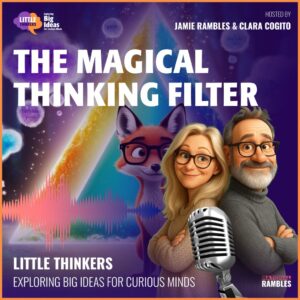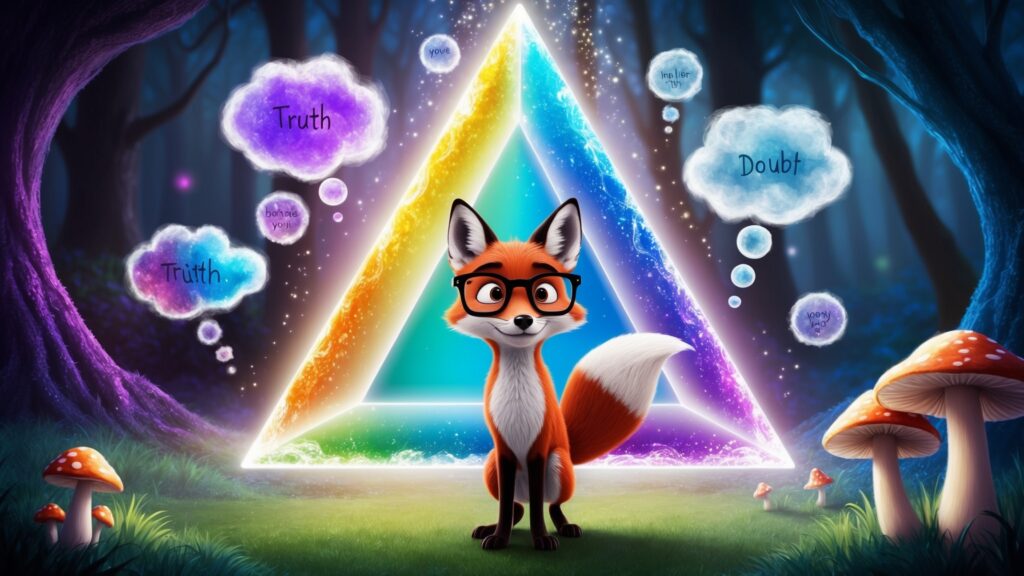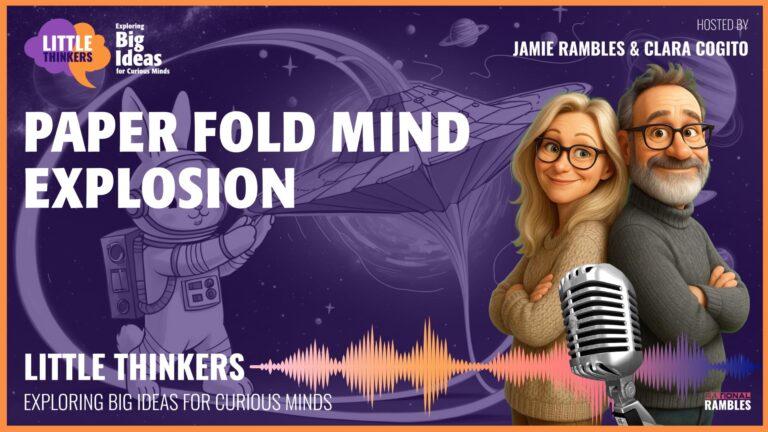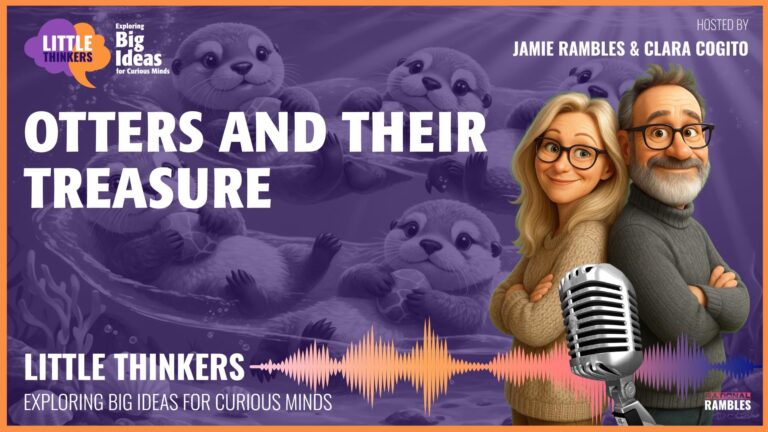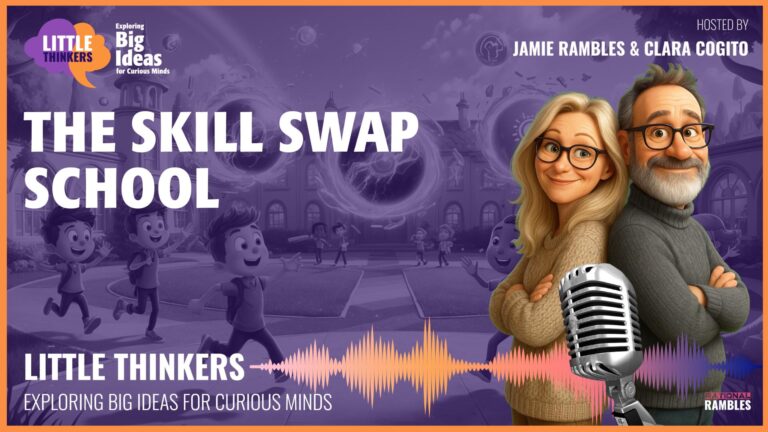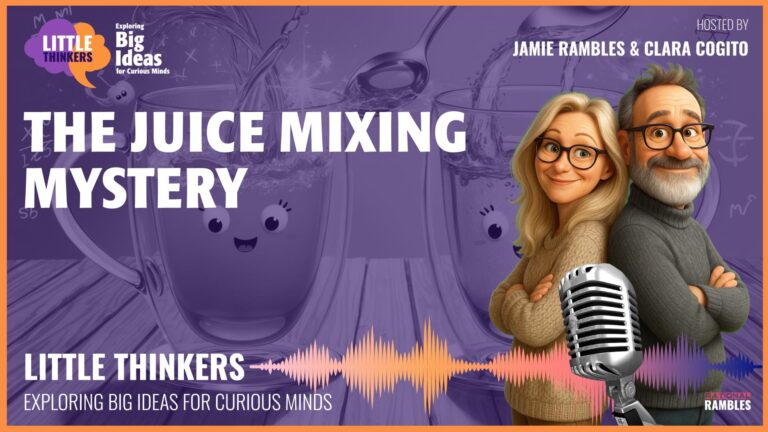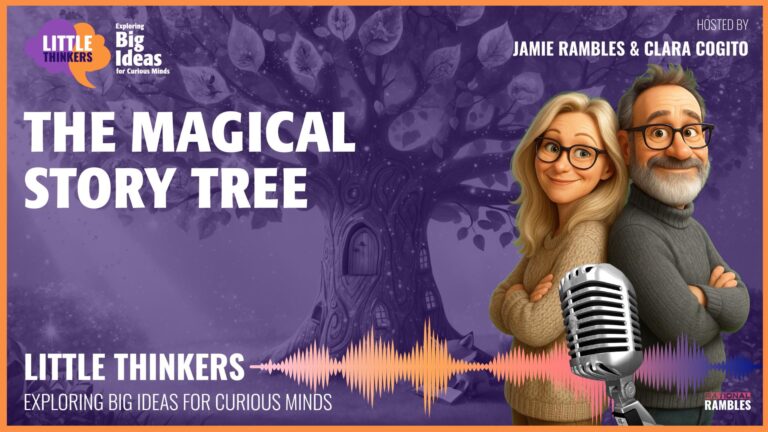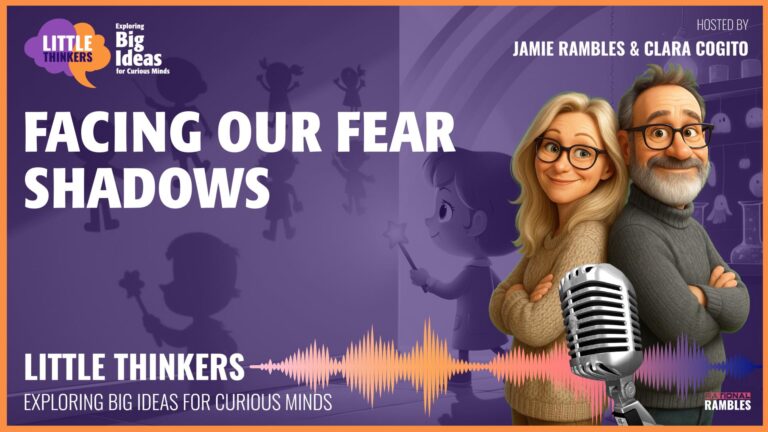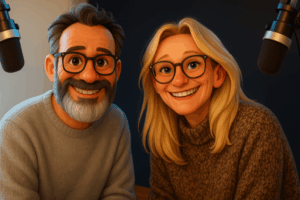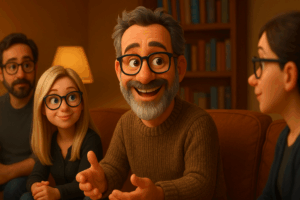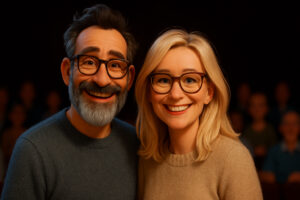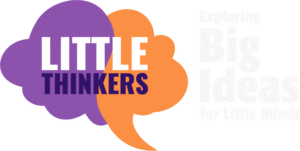The Magical Thinking Filter: How Your Brain Decides What to Believe!
Imagine Having Super-Powered Brain Goggles!
Have you ever wondered how your brain decides what to believe? It’s like you have an invisible filter sitting right between your eyes and your brain! This special filter helps you decide if something is true or not true. Pretty cool, right?
Think about it this way: imagine wearing magical goggles that check everything you see and hear before it gets to your brain. Sometimes these goggles say, “Yes, that’s definitely true!” and sometimes they say, “Hmm, I’m not so sure about that!”
How Does Your Thinking Filter Work?
Your thinking filter is like having a special control panel inside your head with a dial you can turn. Let’s see what happens when you change the settings:
The “Believe Everything” Setting
If your filter is set to “believe everything,” then when someone tells you, “There’s a purple elephant doing cartwheels in the playground,” you’d shout, “WOW! Let’s go see it!” without asking any questions. You’d believe it right away!
Imagine your friend says they can jump over your house. With your filter set to “believe everything,” you’d say, “That’s amazing!” without wondering if it’s actually possible.
The “Question Everything” Setting
If your filter is set to “question everything,” you might say, “Hmm, elephants aren’t usually purple. And how would an elephant get to our playground? I need to check this out carefully before I believe it!”
When your friend claims they can jump over a house, your “question everything” filter would think, “Humans can’t jump that high. Maybe they mean a tiny dollhouse?”
Did You Know Your Brain Is Super Busy?
Your brain deals with millions of pieces of information every single day! That’s like trying to count all the stars in the sky! No wonder we need these special thinking filters to help us sort through everything.
While you’re reading this, your brain is also noticing sounds around you, how your chair feels, the brightness of the room, if you’re hungry, and so many other things! Your thinking filter helps decide what’s important and what to believe.
When Should You Believe Things Right Away?
Some things don’t need much checking. If your best friend tells you they had spaghetti for dinner, you probably don’t need to say, “PROVE IT! Show me pictures of your spaghetti!” That would be pretty silly!
Imagine asking for evidence every time someone tells you something simple:
- “I brushed my teeth this morning.” — “I need to inspect your toothbrush for proof!”
- “I like the color blue.” — “Show me scientific evidence of your color preference!”
- “I have a cat named Whiskers.” — “I demand a cat identity verification!”
Your friends might think you’re acting a bit strange if you questioned everything like this!
When Should You Question Things Carefully?
Other times, it’s super important to have your filter set to “check carefully.” Like if you see something online that says, “Candy is healthier than vegetables!” That doesn’t sound quite right, does it?
Safety Alert Situations!
If someone you don’t know sends you a message saying, “I’ll give you a free toy, just tell me where you live!” your filter should go BEEP BEEP BEEP! That’s when your “question everything” filter is keeping you safe!
Other times to be extra careful:
- When someone asks for your personal information
- When a website promises something that seems too amazing to be true
- When you see “facts” that sound really strange or impossible
- When someone tries to get you to do something that feels wrong
Your Filter Can Change Like a Chameleon!
The smartest way to use your thinking filter is to change it depending on what you’re doing – just like a chameleon changes colors to match its surroundings!
When things are just for fun, like watching cartoons or reading fairy tales, you can set your filter to “just enjoy it!” We know cats don’t really talk and wear boots like in the stories, but it’s fun to pretend!
When things are important or could be unsafe, we turn up the questioning dial. It’s like having a volume knob for your skepticism!
Try This Thinking Game!
Let’s play a quick game called “What Would Your Filter Say?” I’ll tell you something, and you imagine what your thinking filter might say about it.
Situation 1: “Your friend tells you they saw a dog riding a skateboard in the park.”
What would your filter say? Maybe: “That sounds unusual, but I’ve seen videos of skateboarding dogs! I’d want to ask: What kind of dog? How big was the skateboard? Did a person teach the dog to do that?”
Situation 2: “A website says if you click a button, you’ll win a brand new bicycle right away!”
Your filter might say: “WHOA there! That sounds too good to be true! Free bicycles don’t usually appear with just one click. This might be a trick. I should ask a grown-up before clicking!”
How To Handle School Learning
What about things we learn in school? Should our filter be set to “believe everything” or “question everything” when teachers tell us stuff?
Teachers work really hard to share correct information. But it’s always good to be curious and ask questions! Like “Why does that happen?” or “How do we know that’s true?” Most teachers LOVE when you’re curious!
Be A Mini-Scientist!
Scientists are professional question-askers! They don’t just believe things – they do experiments and collect evidence. Their filters are set to “I need proof before I believe this!”
You can be like a scientist in your everyday life! If your friend says, “I can jump higher than the moon!” you might think, “Hmm, that doesn’t sound right.” So you could say, “Let’s test it! Let’s see you jump and then measure how high you went!”
Watch Out For Tricky Advertisements!
Have you ever seen commercials that try to get you to buy toys and snacks? They sometimes make BIG claims!
If a commercial says, “This is the BEST toy EVER and it will make you the HAPPIEST kid in the UNIVERSE!” your filter should go, “Wait a minute! How could they possibly know that?”
They want you to buy their toy, so of course they’re going to say super amazing things about it! It might be a fun toy, but probably not the BEST TOY IN THE HISTORY OF THE UNIVERSE! That’s when our “hmm, is that really true?” filter helps us!
Your Backup Filters: Trusted Grown-Ups and Books!
Some information is easy to check. If someone says, “It’s raining outside,” you can just look out the window! But if someone says, “There are tiny invisible germs on your hands,” that’s harder to check without a microscope!
When we can’t check something ourselves, we have backup filters:
- Trusted grown-ups like parents, teachers, doctors, or librarians can help us figure out what’s true.
- Fact books and science books are full of information that lots of smart people have already checked!
- Libraries are like giant buildings FULL of pre-filtered information!
A Cool Way to Think About Libraries
Libraries are like huge collections of filtered information! Scientists, historians, and other experts have already done loads of research, and their best ideas are stored in books. It’s like having thousands of smart thinking filters all in one place!
Your Filter Helps With Both Facts AND Fun!
One of the most amazing things about your brain filter is that it can do TWO important jobs:
1. It helps you learn true facts about the world around you
2. It lets you enjoy make-believe and imagination!
When you’re learning about space in school, your filter is set to “let’s learn real facts.” But when you’re reading a story about unicorns, your filter switches to “let’s enjoy this magical story!” Both settings are important!
What’s the Best Filter Setting?
The best setting for your thinking filter most of the time is “curious but careful.” That means:
- You’re open to learning new things
- You take time to think, “Does this make sense?”
- You’re not afraid to ask questions
- You check important information with trusted grown-ups
- You enjoy both facts AND imagination
Remember, YOU get to control how you filter information! It’s like a superpower we all have – the power to think for ourselves!
Your Turn to Wonder!
Now that you know about your magical thinking filter, pay attention to how you decide what to believe! Notice when your filter goes on high alert, and when it relaxes to enjoy stories.
Remember, asking questions isn’t being rude – it’s how we learn and grow smarter every day! Your curious questions are the sign of a healthy, working thinking filter!
What will you question today? What will you discover? Your amazing thinking filter is ready for adventure!
